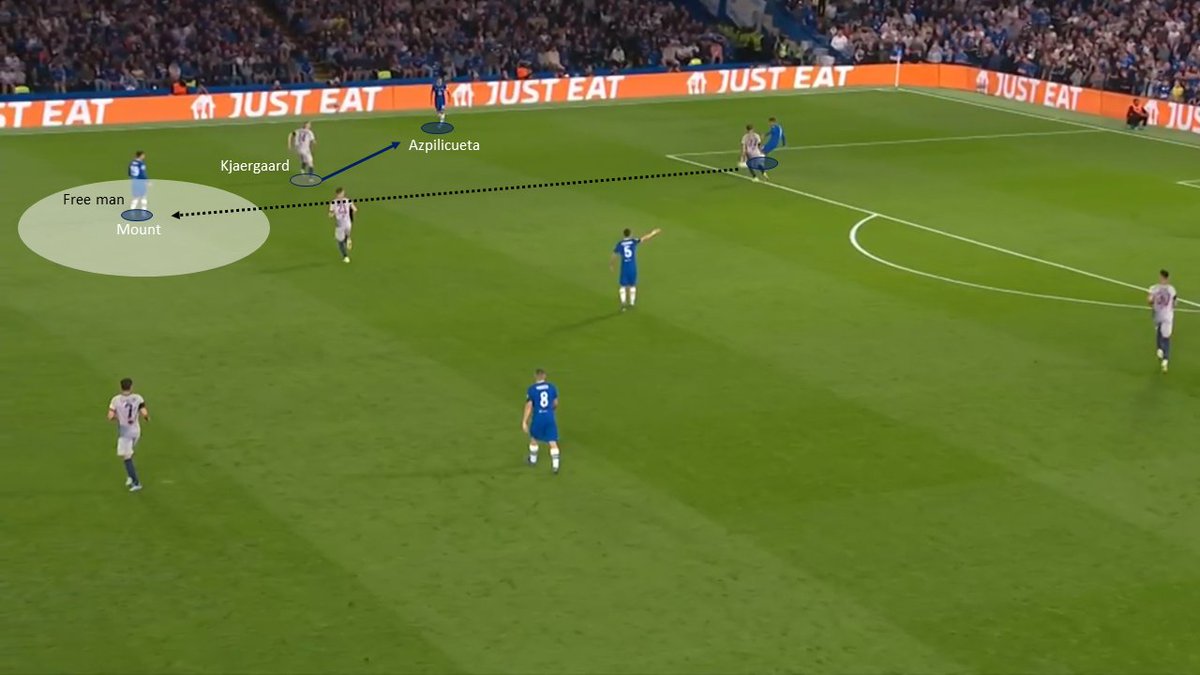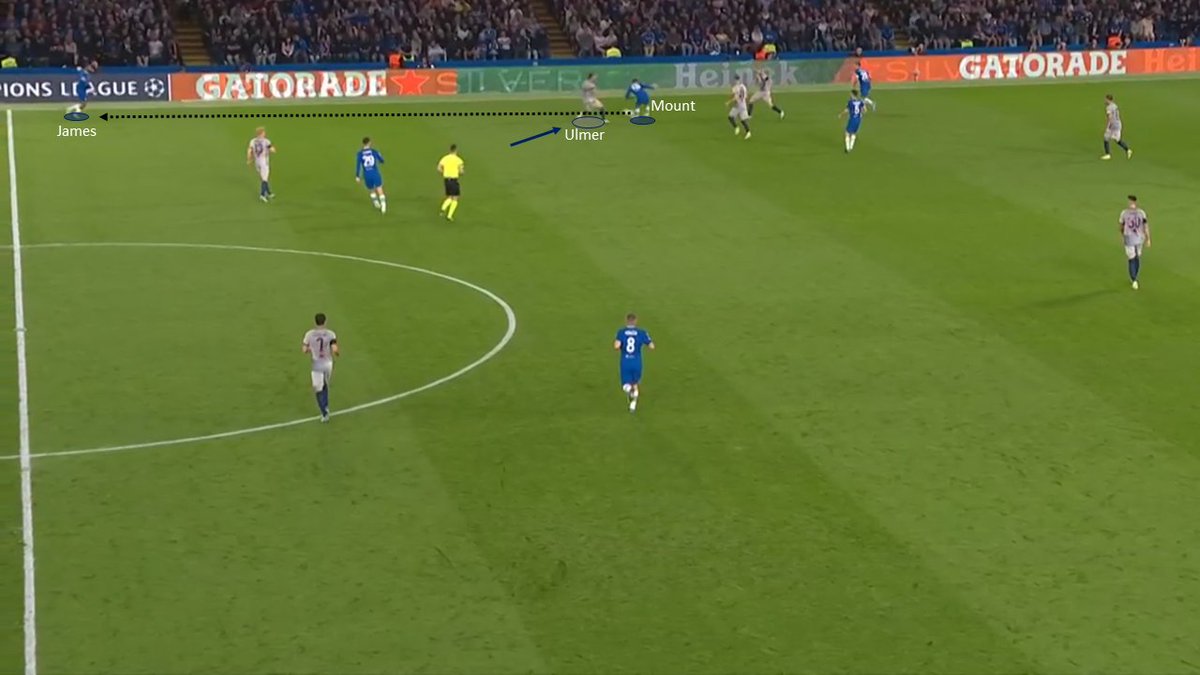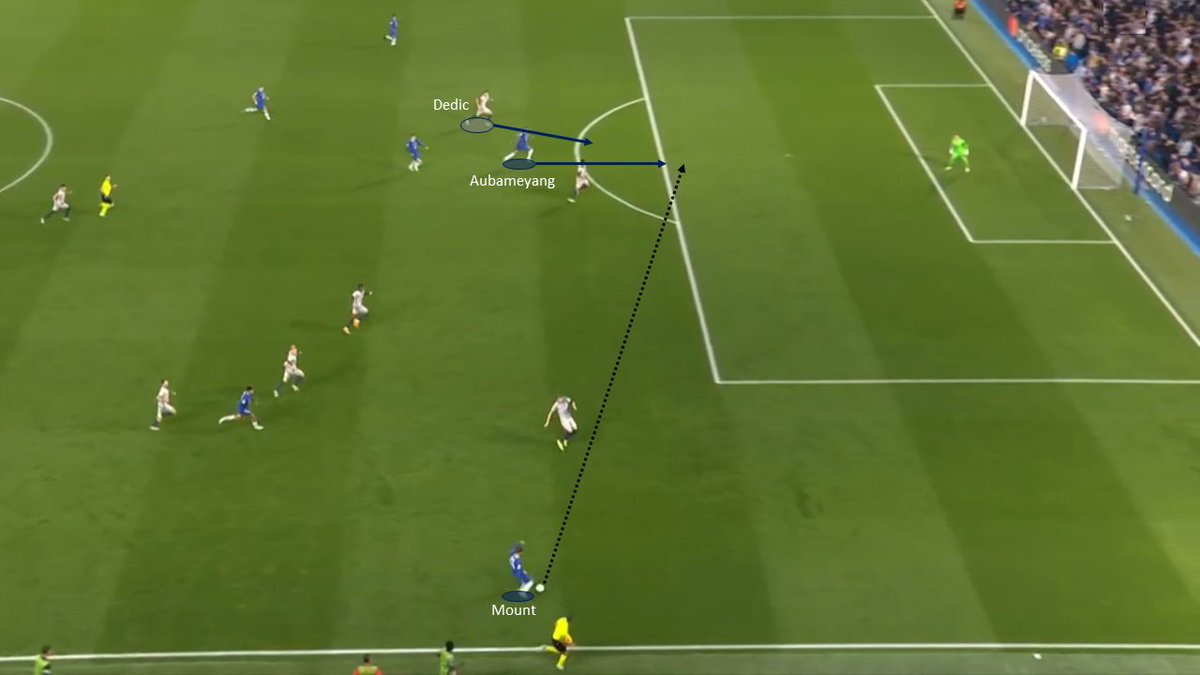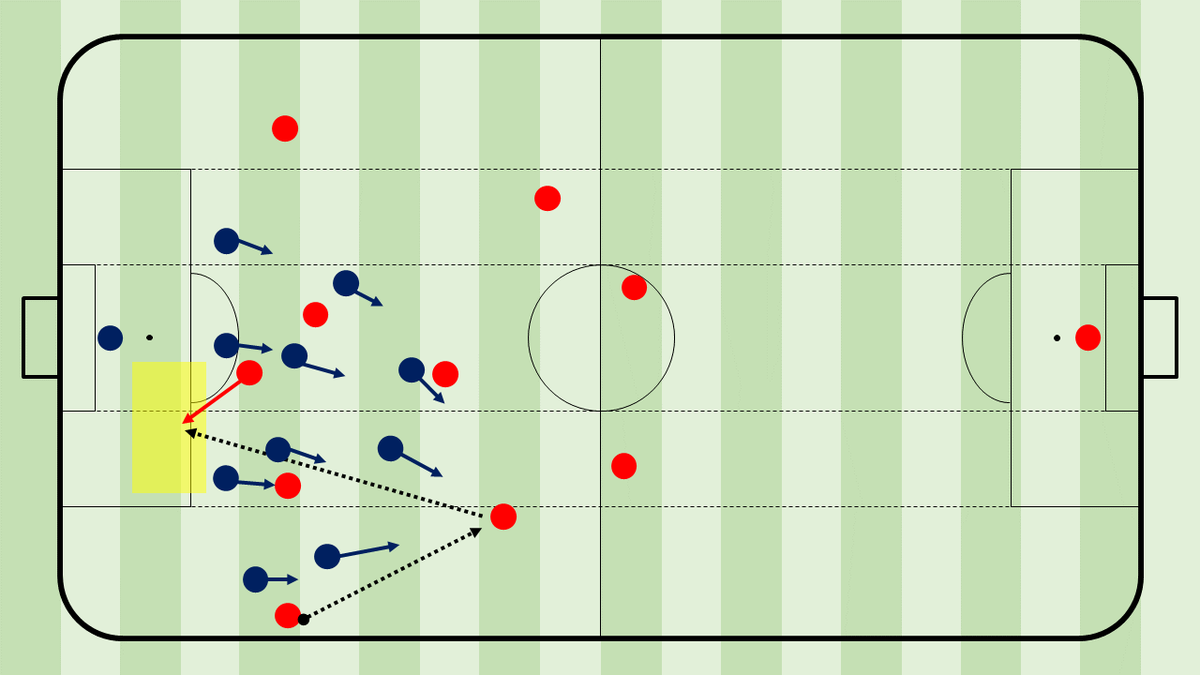
Match Analysis: Graham Potter’s Chelsea debut vs. Salzburg #CHESAL
Potter set his team up in a 3-diamond-3 formation in-possession, a shape we could observe often at Brighton as well.
Potter set his team up in a 3-diamond-3 formation in-possession, a shape we could observe often at Brighton as well.

Especially in the 1st half, Chelsea was regularly able to progress down the right against Salzburg’s asymmetric 4-diamond-2 press. When Kjaergaard (left 8) moved out, Mount was often free, if Salzbrug didn't adjust. When the pass was played wide, Chelsea had a 2v1 overload wide. 





At times, Sucic would leave Jorginho to press Mount, but this obviously allowed Chelsea to easily progress through Jorginho and break the press. 

Occasionally, Ulmer moved out on Mount, but that was very risky as it opened a lot of space in behind to exploit and forced the left centre back to move over. 





When the ball was on Chelsea’s right side and Kjaergaard moved up, Seiwald could shift over to mark Mount. This was probably the best variation but could still leave Havertz free to receive in between the lines. However, that pass was often difficult to execute. 



There were a few more little variations how Salzburg pressed, but what can be summarized is that Chelsea regularly found a way through.
Another important aspect in Chelsea’s offensive play were runs in behind by the 8s in the gap between FB and CB. These movements either dragged their markers away, opening space for someone else or the runners could exploit the space in behind themselves. 



However, always making runs in behind would be very predictable and is also not the best solution to a situation every time. Especially Kovacic knew when to make runs in behind and when to stay deeper to give Sterling space for a potential 1v1. 



Chelsea’s goal represents their attacking play in that game perfectly: Progressing down the right side, run in behind by Mount to exploit space in between FB and CB, leading to a stretched backline, Aubameyang pins the FB and Sterling eventually scores. 







Salzburg improved more and more as the game went on. They looked to compress the centre out of possession, were less aggressive and handed players over more cleanly. Kjaergaard for example moved out less and instead looked to mark Mount.
The Austrians eventually scored the equalizer, which came from a pressing situation. Salzburg brilliantly bypassed the counterpressing from Chelsea through quick combinations and Okafor scored the goal after a cross towards the near post by Adamu.
Conclusion:
Even though the game ended in a draw, Potter’s Chelsea looked promising. The Blues especially dominated the first half and probably should win this game.
Even though the game ended in a draw, Potter’s Chelsea looked promising. The Blues especially dominated the first half and probably should win this game.
• • •
Missing some Tweet in this thread? You can try to
force a refresh





















